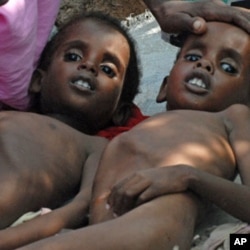The United Nations has declared a famine in two areas of southern Somalia, amid the worst drought to hit the country in more than 50 years.
Somalia's President Sheikh Sharif Sheikh Ahmed said food has become so scarce that there is "in fact a famine" in his country. He made the comment July 19, while touring a displaced persons camp in the capital, Mogadishu.
The Bakool and Lower Shabelle regions are the areas struck by famine, according to U.N. spokesman Mark Bowden in Nairobi.
U.S. Secretary of State Hillary Clinton released a statement expressing deep concern about the humanitarian emergency in the Horn of Africa and July 20th.
The United States will provide an additional $28 million in aid to the more than $431 million in food and non-food emergency aid assistance, said Secretary Clinton.
The word “famine” is not used loosely by the United Nations or the international aid community. Three top criteria were used to determine the existence of a famine in Somalia, said Grainne Moloney of the Food and Agriculture Organization. Moloney is the chief technical advisor with the FAO’s Food Security and Nutrition Analysis unit in Nairobi, Kenya.
“One relates to lack of sufficient food at a severe level for poor households, and at least 30% of households need to be suffering at that level -- that they can’t feed themselves or their families.
“The second relates to very high levels of malnutrition, particularly in children under five. We’re talking about greater that 30% acute malnutrition in children under five.
“The third outcome is the death rate in the total population. Once it reaches more than two deaths per 10,000 populations per day in a given area, then that meets the final criteria for famine,” said Moloney.
Others, include a sudden spike in food prices, people selling off everything they own to buy food and people leaving their homes in search of food.








